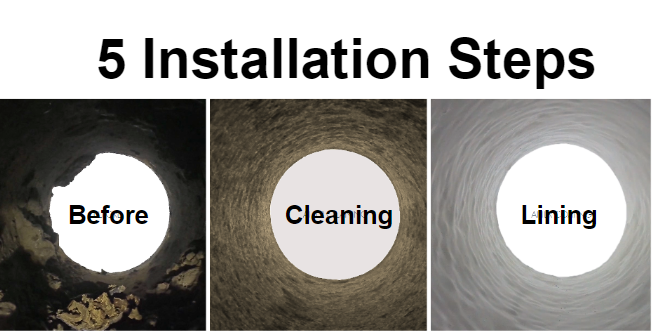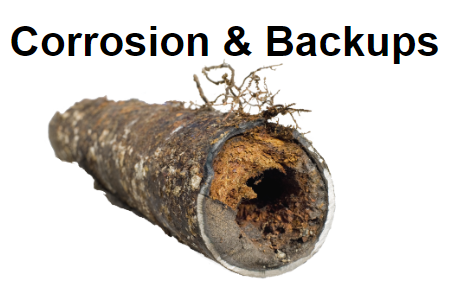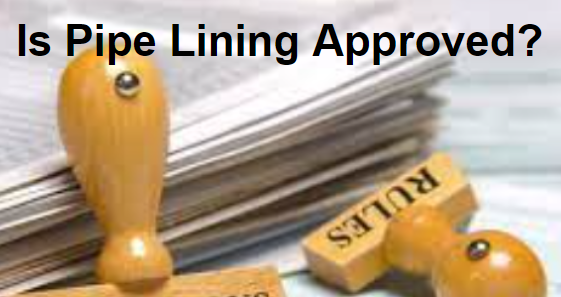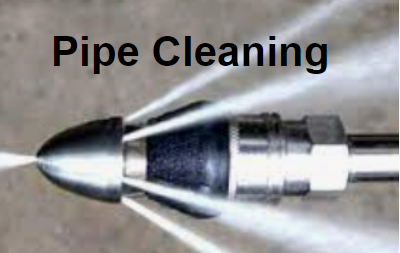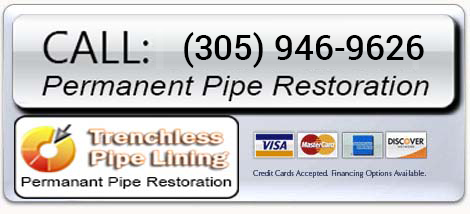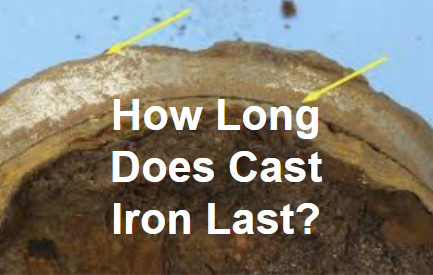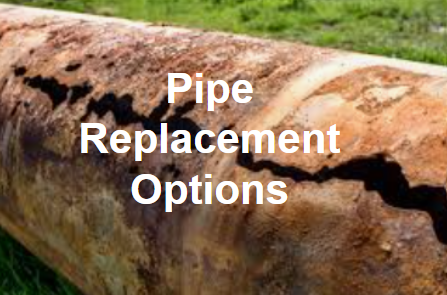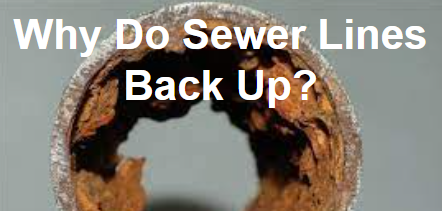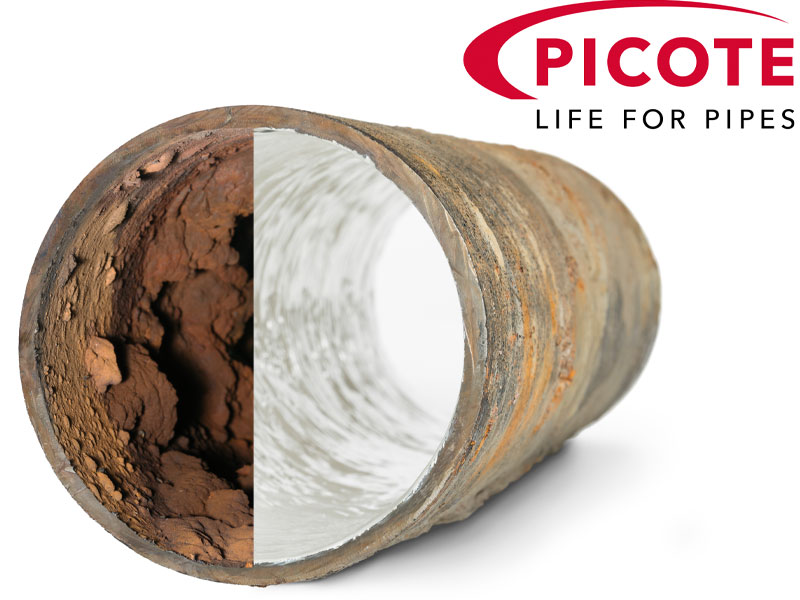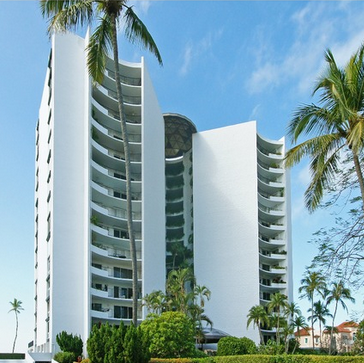How, Why, and Where Cast Iron Pipe Corrosion Occurs Underground, And The Trenchless Pipe Lining Solution
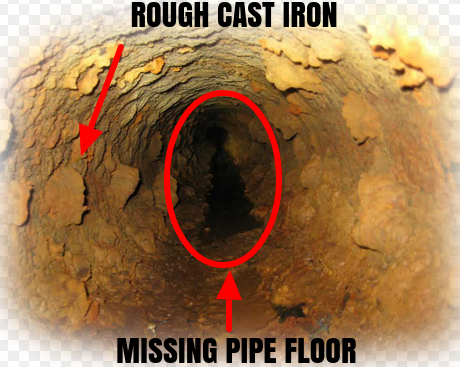
Cast iron pipes have been widely used in plumbing systems due to their durability and strength. However, over time, these pipes can experience corrosion, particularly at the bottom where water wets the pipe more than the walls and roof. Here we explain why cast iron pipe corrosion occurs fastest at the bottom, discuss the consequences on the pipe’s thickness, and delve into the formation of cracks in the floor of the pipe, leading to repeated backups caused by serrated edges catching on debris.
Why Does Corrosion Occur Faster at the Bottom?
Corrosion is a natural process where metals deteriorate due to chemical reactions to their environment. In the case of cast iron pipes, the primary factors influencing corrosion are the presence of water, oxygen, and certain chemical compounds. Corrosion typically occurs at an accelerated rate in areas where water remains in contact with the pipe surface.
At the bottom of a cast iron pipe, the accumulation of water is more pronounced due to gravity. This results in a higher concentration of dissolved oxygen and various corrosive compounds, such as hydrogen sulfide and carbon dioxide. These compounds can react with the iron in the pipe, leading to the formation of iron sulfide and iron oxide, commonly known as rust. The increased concentration of these corrosive elements at the bottom of the pipe promotes the faster corrosion of the iron.
Consequences of Pipe Thickness
As corrosion progresses, the cast iron pipe gradually loses its original thickness. The corrosive reactions eat away at the surface of the pipe, causing the iron to weaken and thin over time. The rate of corrosion can vary depending on the specific conditions, such as the composition of the water, pH levels, and temperature.
The reduction in pipe thickness poses several risks. Firstly, as the pipe becomes thinner, its structural integrity is compromised, making it more susceptible to fractures and leaks. This can lead to water leakage, causing damage to surrounding structures and potential water wastage. Secondly, a thinner pipe has reduced flow capacity, which can result in reduced water pressure and flow rate in the affected plumbing system. These consequences emphasize the importance of addressing corrosion in cast iron pipes promptly.
Cracks in the Floor of the Pipe: One of the critical outcomes of corrosion in cast iron pipes is the formation of cracks, particularly on the floor of the pipe. As the corrosive reactions continue, the weakened areas can develop small fractures or fissures. These cracks can gradually expand due to the ongoing corrosion process, water pressure, and external forces.
When a crack forms in the floor of the pipe, it introduces a potential pathway for water and waste to escape. Additionally, the serrated edges of the crack can catch debris flowing through the pipe, leading to repeated backups. The accumulation of debris further exacerbates the blockage, causing reduced flow and potential sewage backups in the plumbing system. Consequently, this can result in property damage, foul odors, health hazards, and the need for costly repairs.
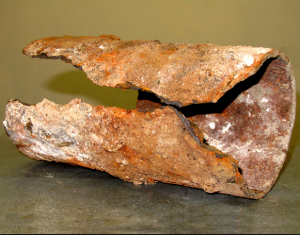
Trenchless Pipe Lining: An Excellent Solution For Pipe Replacement!

When it comes to replacing deteriorating pipes, traditional methods involving excavation through floors can be time-consuming, disruptive, and costly. However, there is an innovative alternative known as trenchless epoxy pipe lining. Below we highlight the benefits of trenchless epoxy pipe lining compared to excavation, emphasizing the avoidance of extensive floor damage and the potential for significant time savings.
The Drawbacks of Excavation:
Excavation-based pipe replacement involves the removal of floors, including kitchen and bathroom cabinets, to gain access to the old pipes. While this method has been used for many years, it has several notable drawbacks that make it less desirable in many situations.
- Time-consuming Process: Excavation-based pipe replacement is a labor-intensive process that can take a significant amount of time. Depending on the complexity of the plumbing system and the extent of the work required, the process can easily stretch into several weeks or even months. This prolonged timeline can cause inconvenience for homeowners, disrupt daily routines, and result in increased costs associated with temporary living arrangements or alternative plumbing arrangements.
- Extensive Floor Damage: Excavation through floors can cause significant damage to the property, particularly to kitchen and bathroom areas. This method often requires removing cabinets, fixtures, and flooring materials, resulting in disruption and the need for subsequent repairs. The cost of repairing or replacing these elements adds to the overall expense of the pipe replacement project.
Trenchless Epoxy Pipe Lining as a Superior Solution:
Trenchless epoxy pipe lining, on the other hand, offers a modern and efficient alternative to traditional excavation-based methods. This innovative technique provides numerous benefits that make it a superior solution for pipe replacement projects.
- Minimal Disruption and Floor Damage: One of the most significant advantages of trenchless epoxy pipe lining is its ability to preserve existing floors, walls, and structures. The process involves accessing the pipes through small entry points, typically existing access points or strategically placed access holes. This eliminates the need for extensive excavation and the subsequent damage caused to floors and cabinets. Homeowners can avoid the hassle and expense of remodeling or replacing kitchen and bathroom fixtures, resulting in minimal disruption to their living space.
- Reduced Project Time: Trenchless epoxy pipe lining offers a considerably faster pipe replacement solution compared to traditional excavation methods. Instead of weeks or months, the process can often be completed within a matter of days. The epoxy lining is applied to the existing pipe, creating a seamless and durable new pipe within the old one. This quick turnaround time minimizes inconvenience for homeowners and allows them to resume their normal routines more swiftly.
- Cost-effectiveness: Choosing trenchless epoxy pipe lining can also lead to cost savings. The elimination of extensive floor damage and the need for remodeling or cabinet replacement significantly reduces the overall project costs. Additionally, the reduced labor and time requirements contribute to lower expenses. Homeowners can enjoy the benefits of a new and durable pipe system without the financial burden associated with extensive excavation and renovation.



